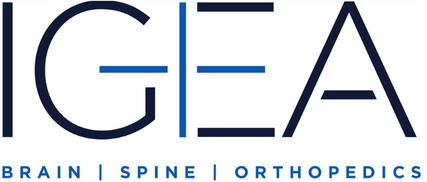STROKE TREATMENT SPECIALISTS IN NEW JERSEY & NEW YORK
A stroke, also known as a cerebrovascular accident (CVA), occurs when the blood supply to part(s) of the brain is interrupted or harshly reduced, which deprives the brain of oxygen and nutrients. As a result, brain cells begin to die which can lead to permanent neurological damage or death without prompt treatment.
WHAT CAUSES A STROKE?
A stroke can be caused by a blockage in an artery of the brain (ischemic stroke) or the bursting or leaking of a blood vessel (hemorrhagic stroke). In some cases, a patient may experience a temporary interruption of blood flow (transient ischemic attack, also known as TIA).
DIFFERENT TYPES OF STROKES
Ischemic Stroke – Eighty-five percent of strokes are ischemic. An ischemic stroke happens when arteries that supply blood to the brain become blocked or narrowed, resulting in reduced blood flow (ischemia).
Two of the most common types of strokes are a thrombotic stroke and embolic stroke. With a thrombotic stroke, a clot which blocks the blood flow forms directly in one of the arteries of the brain. An embolic stroke occurs when a clot forms elsewhere in the body (normally the heart), then breaks off and travels through your bloodstream, lodging in the narrower arteries of the brain.
Hemorrhagic Stroke – When an artery or vein of the brain ruptures or leaks, it is known as a hemorrhagic stroke. The most common types of hemorrhagic stroke are a subarachnoid hemorrhage and an intracerebral hemorrhage. To cause a subarachnoid hemorrhage, an artery that is located on or near the surface of the brain bursts, filling the space between the skull and the brain with blood. The most common cause of subarachnoid hemorrhage is head trauma, although it may also be caused by the rupture of a brain aneurysm – a protruding pouch that forms due to a weakness in the arterial wall. An intracerebral hemorrhage occurs when a blood vessel within the brain bursts and spills into the surrounding tissue – often caused by untreated high blood pressure.
Transient Ischemic Attack (TIA) – This type of stroke is similar to an ischemic stroke, but generally does not cause permanent symptoms. It should be noted, however, that the occurrence of a TIA puts you at an even greater risk of having a stroke. It may be an indication that there is a narrow or partially blocked passageway in an artery leading to the brain or another condition that raises your risk for a future stroke.
KNOW THE SIGNS
It is important to recognize the symptoms of a stroke. Fast, effective treatment is key in minimizing permanent damage to the brain and dictates what treatment should follow. F.A.ST. is a quick and easy way to remember and recognize the signs of a stoke:
- Face drooping: Does one side of the face droop or is the smile uneven?
- Arm weakness: Are one of the arms numb or weak? If you ask the person to raise both arms, does one drift downward?
- Speech difficulty: Is speech slurred? Is the person unable to speak or difficult to understand?
- Time to call 9-1-1: If you or anyone shows signs of these symptoms (even if they disappear), call 9-1-1 for immediate medical attention and note the time when symptoms first appeared.
ARE YOU AT RISK?
While some risk factors are entirely out of your control, others can be reduced through behavior modification. Some of the factors which increase stroke risk and can be minimized include:
- Obesity
- Heavy drinking
- Smoking or exposure to secondhand smoke
- Drug use
- Diabetes
- High cholesterol
- Cardiovascular disease
DIAGNOSIS
In order to diagnose whether you suffered from a stroke or are at risk for a stroke, your doctor may conduct several tests, including:
- Physical examination: A comprehensive examination will be conducted, including a rundown of any recent symptoms, medical/family history and blood pressure. You may also be checked for cholesterol crystals or clots behind your eyes.
- Blood tests: Several blood tests may be conducted to determine your blood’s clotting time, levels of sugar and the balance of other important chemicals.
- Magnetic resonance imaging (MRI): This test can detect tissues of the brain that are damaged as a result of hemorrhages and ischemic stroke using magnets to create a diagnostic image.
- Computerized tomography (CT) scan: Using a series of x-rays, this scan can create a detailed image of your brain to show stroke damage and hemorrhages.
- Carotid ultrasound: Sound waves are used to show the inside of the carotid arteries located in the neck, checking for any buildup of fatty deposits and flow of blood through the vessels.
- Cerebral angiogram: A catheter is inserted through the groin to inject dyes into the blood vessels to make them visible on an x-ray, giving a detailed view of all of the vessels of the brain.
- Echocardiogram: Sound waves are used to create an image of the heart in order to check for an origin point for a clot that may have traveled to the brain.
TREATMENT
In the event that you have had a stroke or TIA you may qualify for certain treatments, including:
- Tissue plasminogen activator – “clot busters” (IV tPA)
- Intra-arterial thrombectomy – “Roto-rooter"
- Balloon angioplasty and stent
At IGEA Brain, Spine & Orthopedics, our team of caring professionals is dedicated to providing you with the comprehensive care you deserve when dealing with a stroke and its effects. For more information or to make an appointment, contact us today.

